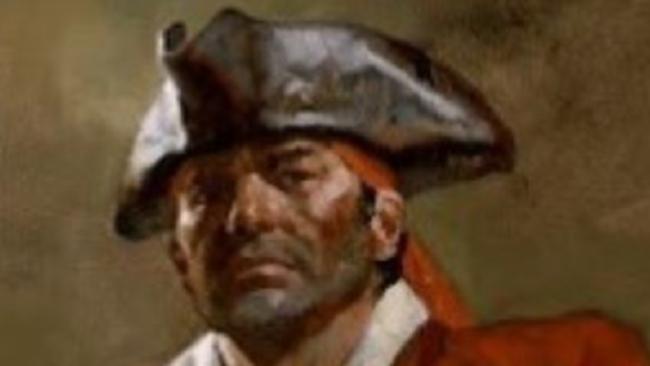
Samuel Bellamy: A Short and Tragic Career of the Richest Pirate
Samuel Bellamy, a Royal Navy sailor born in England on February 23, 1689 (other accounts indicate March 18, 1689) engaged in several conflicts as a child.
Bellamy sailed to Cape Cod, Massachusetts, in 1715 and fell in love with Maria Hallett. Their relationship is complicated by age and marital status. Some versions say Hallett’s parents liked Bellamy but didn’t want her to marry a “mere poor sailor.”
Heartbroken, Bellamy went to Florida in 1716 to find treasure from sunken Spanish ships. He went to the Caribbean, piracy’s golden age. Bellamy travelled with jewellery expert and faithful friend Palgraves Williams on a life-changing journey.
Samuel Bellamy: Captaincy, Alliance, Slave Trade
Bellamy became known as “Black Sam.” after ditching the powdered wig for long, tied-back black hair. The “Robin Hood of the Seas” and “Prince of Pirates.” Bellamy robbed the rich rather than the poor. Professor Christopher Minster names Pirate Samuel “Black Sam” Bellamy “Piracy’s Tragic Romeo.”
Pirate Bellamy turned to piracy after a failed Florida treasure search. They hijacked Gulf of Honduras small ships. Bellamy worked with pirates like Charles Vane and joined Benjamin Hornigold’s Marianne crew. Bellamy initially sailed with Hornigold’s first mate, Edward Teach, dubbed Blackbeard.
Hornigold appointed Bellamy to captain the Mary Anne, a small sloop they robbed the same year, as he rose socially. Blackbeard and Black Sam built reputations. Hornigold seemed to intuitively choose crew members who would make history.
It wasn’t enough. Hornigold’s hesitation to English pirate ships irritated him. Such decisions could frustrate those living on the seas for months under strict command.
The Marianne was voted on like John “Calico Jack” Rackham, who succeeded Captain Vane. The outcome was expected: Hornigold lost. He and loyalists like Blackbeard deserted the ship. The remaining 90 crew members chose Samuel Bellamy as commander.
Bellamy joined famed pirate Olivier Levasseur after working with Captain Vane and Captain Hornigold. Bellamy stayed in the Caribbean while Levasseur went to South America after stealing many ships.
Sultana, one of the seized ships, became their flagship. Palgraves Williams, Bellamy’s longtime friend, became quartermaster and Marianne captain. Bellamy often used two ships to assault.
Biggest Heist and Sudden End
Bellamy’s biggest piracy was hijacking the Whydah between Hispaniola and Cuba in May 1717. Whydah, a year-old ship with 18 guns, transported African slaves to America or exchanged them for precious metals, spices, and other goods for England.
After three days, Bellamy’s crew shot the Whydah. The skipper gave up easily. Bellamy’s mercy let them go with the Sultana. Whydah became Bellamy’s, and slaves may have joined the crew.
Bellamy’s crew included almost 30 Africans. Not all were ex-slaves, according to marine historian Marcus Rediker. He also stated “there was a group of rebellious slaves rowing offshore to join pirate ships.” For those willing to suffer it, slavery on cotton, sugar, and tobacco plantations or sailing under the pirate prince (or any captain) seemed like a good option.
Bellamy wrecked the captain’s quarters and instituted democracy, a usual practise on Bahamas pirate ships. Bellamy gave the Whydah 28 cannons. Whydah became the most dreaded pirate ship, capable of defeating the Royal Navy.
Samuel Bellamy, the “poor sailor,” was gone.
Captain Samuel Bellamy, His Short Career
Pirates flew many merry roger flags during the golden period. Some pirates used skeleton or skull pictures on their black flags to scare their targets. The jolly roger with a skull and crossed bones was adopted by many pirate crews, however its origin is unknown. Edward England, John Taylor, and Bellamy raised the jolly roger flag.
Short-lived Bellamy’s skull and crossed bones. After taking the Whydah two months earlier, a storm separated Bellamy’s main ship from Palgraves Williams’ Marianne in April 1717. For his crew reunion, Bellamy went to Maine in northern America.
Bellamy may have escaped to Massachusetts in the same location with his girlfriend Maria Hallett. He looked more assured, no longer a bad sailor.
The Whydah got another storm unexpectedly. A nor’easter cyclone off Cape Cod sank the mightiest pirate ship, Bellamy, and his crew on April 26, 1717. Only two of 140-plus crew members escaped. Captain Bellamy’s story ended beneath the water.
The Whydah was found in July 1984 after two years of searching. The Whydah was the largest pirate ship with a 4.5-5-ton treasure haul. Submersible explorer Barry Clifford led and supported a crew that recovered 200 artefacts from the sunken ship, including a bell inscribed “Whydah Gally 1716.”
The Legacy
Forbes named Samuel Bellamy the richest pirate. In 2008 US currency, the prince of pirates made $120 million, surpassing Sir Francis Drake and Thomas Tew.
The Whydah Pirate Museum in Yarmouth, Massachusetts, displays Bellamy’s ship’s finds. The world’s only true pirate treasure show and greatest shipwreck collection of pirate artefacts.
Samuel Bellamy appears in romanticised legends and pirate images in pop culture, though not as frequently as other names from the golden age of piracy. His appearances include “The Lost Pirate Kingdom,” “Assassin’s Creed: Pirates,” and “One Piece.”
Bellamy is less famous than other Bahamian pirates because he only served for a year as a pirate after a failed love affair turned into a treasure hunt and nine months as captain after replacing Benjamin Hornigold. Samuel Bellamy could have become the most famous pirate like Edward Teach, or “Blackbeard,” without the storm.